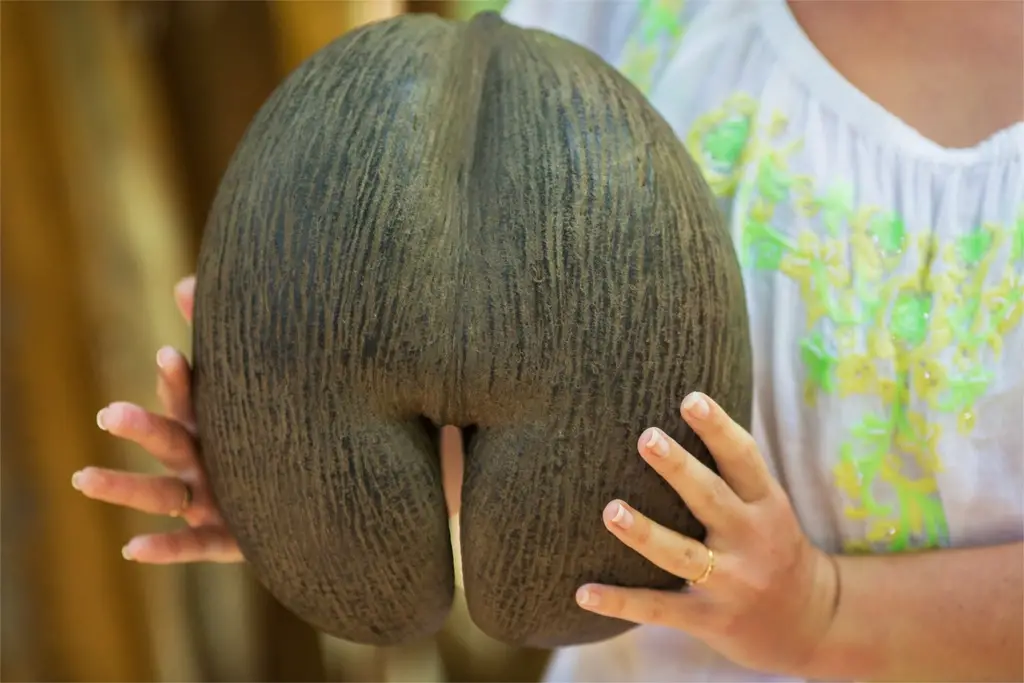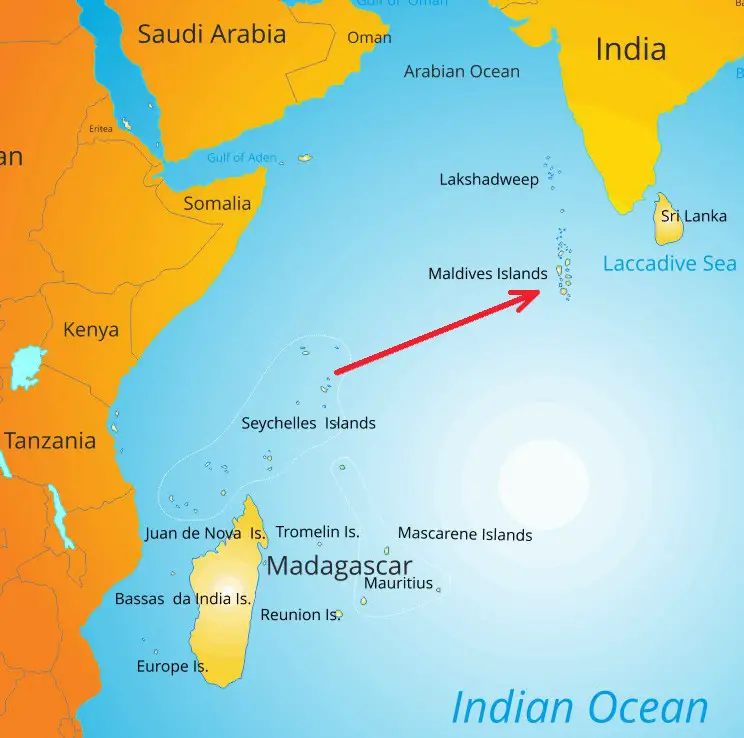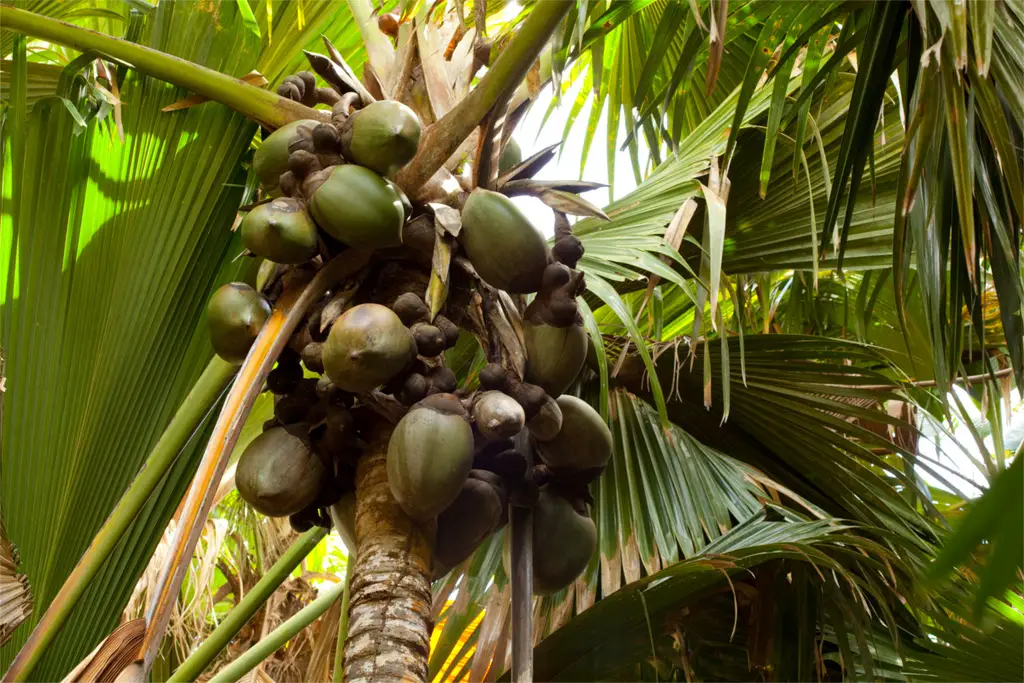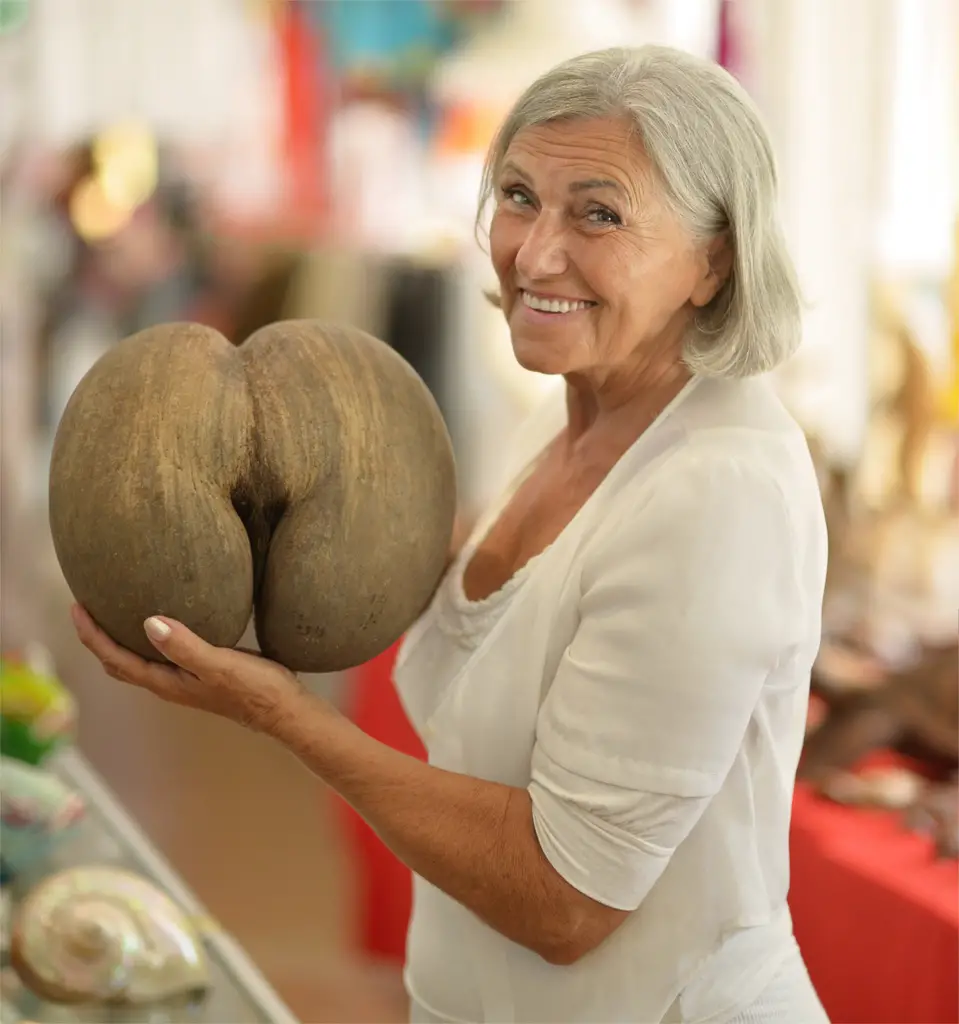The Coco de mer palm, native to the Seychelles off the coast of Africa, has the largest seed in the plant kingdom. A single one of the plant’s seeds can weigh between 30 and 55 pounds, and this also makes them the heaviest in the world. But this fascinating plant has some other secrets that are just as fascinating as the size of its seeds.
The Coco de mer palm grows on only two islands in the Seychelles; Praslin and Curieuse. The name means “coconut of the sea” because it was once believed they grew underneath the water at the bottom of the ocean. The palms actually grow on dry land but in soil that is lacking in vital nutrients for plant growth such as phosphorus and nitrogen. Even with these less than ideal conditions, these palms are able to produce seeds that are gigantic.

One way the Coco de mer has achieved this feat is by how they use the available nutrients for growth. The leaves were found by researchers to have only one-third of the concentrations of nitrogen and phosphorus as compared to other plants growing on the islands. In addition, the plant reabsorbs the nutrients from the leaves when they become old before they drop to the ground. This means that less energy is lost in the leaves, and this energy can be used elsewhere, namely for the seeds.
The healthy leaves are also incredibly efficient at funneling rainwater directly to the base of the tree. As rain streams down the leaves, important nutrients are picked up from decaying matter and deposited at the base of the tree. Scientists have discovered nitrogen and phosphorus concentrations at the base that are significantly higher than concentrations only 6 feet away.
The seeds were first found on the shore of the Maldives as far back as the 18th century, but no one knew where they came from. This gave rise to the theory that the plants grew underneath the sea.
In 1768, a French explorer named Marion du Fresne found the Coco de mer palms, along with the nuts, growing on Praslin Island. Nuts that had been discovered in the Maldives were these same nuts. The interesting thing was the Maldives were 1,324 miles away from Praslin, and not one Coco de mer palm grew there. The reason none of the palms grew there was simple. None of the nuts that arrived in the Maldives were fertile.
Seeds of many plant species have some evolutionary mechanism they’ve developed to disperse their seeds. Some seeds travel by air or water while others catch a ride on the fur or the inside of an animal. This is not the case with the Coco de mer whose mechanism for seed dispersal only allows it to grow near the parent tree. They developed a unique system since each plant was competing for the same resources.
Researchers have discovered that a seedling from a Coco de mer will grow close to the parent tree to access the abundance of nutrients there. There isn’t another plant species that is known to operate this way. Since the soil is most nutritious at the base of these plants, a new seed will grow there. When a plant starts to grow from the seed, it doesn’t just come up under the parent plant where it fell. It actually grows away from it underground, sometimes as much as 30 feet from the parent before it emerges.
This ingenious way of growing ensures that the plant doesn’t start growing underneath the parent palm where it wouldn’t get enough light, water, or nutrients. This is all a slow process since it takes about ten years for a Coco de mer fruit to ripen before it even falls to the ground.
But why do the seeds become so large, and for what purpose does their size serve? One theory states that it could be because of the ancestor of this particular palm and the method the plant used for dispersing seeds. If the ancient plant relied on animals, namely dinosaurs, to disperse the seeds, they would need to be large.
It’s also theorized that this method became obsolete when the Seychelles broke from India during the continental drift. This left the Coco de mer alone but with the same adaptation from its ancestor. From there, the palms could have adapted to their new situation and out-populated their competition on the islands through their method of growing near the parent tree.
Another theory is that the palms grew large seeds not only to outdo their competition but to outdo those of their same species. Larger seeds hold a larger amount of nutrients, and by making bigger seeds within the species, the healthiest will survive, or those with the most nutrients will grow. It’s also known that larger seeds are known to develop from plants that are isolated than those with more available land area.
Island plants generally have larger seeds than their counterparts on larger landmasses. But unfortunately, the basic answer is no one really knows for sure why the seeds are so huge.
There is still one greater mystery with the Coco de mer palms. No one knows for sure how they are pollinated. The female plants make the seeds and have the largest flowers of any palm trees in the world, but there is still uncertainty about what mechanism allows them to be pollinated from male trees that are quite a distance away.
While there are many candidates who could act as pollinators such as insects or other animals, scientists still don’t know how it’s completed. It seems fitting that a plant that is so unique should have at least something that remains a mystery.
Sources: New Scientist, California Academy of Sciences, IUCN, Britannica, Seychelles News Agency






